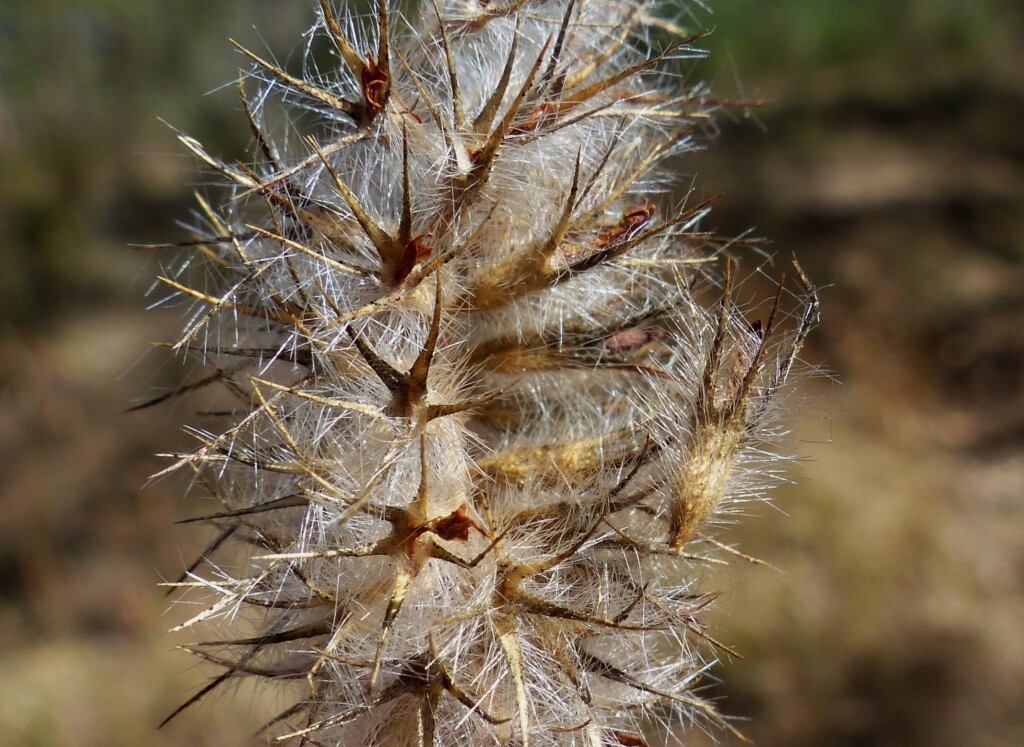Trifolium arvense var. arvense
Hare's-foot CloverErect or ascending annual herb; stems 5–40 cm long, delicate, flexuose, covered with appressed or spreading silky hairs, rarely glabrous. Leaves palmately trifoliolate, petiolate to subsessile; leaflets linear-oblong to narrow-elliptic, 5–20 mm long, 2–5 mm wide, pubescent, entire or toothed at apex, mucronate; stipules membranous. Inflorescence many-flowered, axillary or terminal, ovoid or cylindric, 10–40 mm long, c. 10 mm wide, pedunculate; flowers sessile. Calyx to 4.5–7 mm long, covered with dense hairs, rarely glabrescent, tube cylindric-campanulate, 10-veined, throat open, teeth 2–5 times as long as tube, equal, acute, erect in fruit; corolla 3–6 mm long, white or pink, persistent; standard obtuse, narrow. Pod ovoid, c. 1 mm long, membranous, included or slightly exserted from calyx tube; seed 1, globose, c. 0.8 mm long, yellow. Flowers mainly Sep.–Dec.
LoM, MuM, Wim, GleP, VVP, VRiv, MSB, RobP, MuF, GipP, OtP, WaP, Gold, CVU, GGr, DunT, NIS, EGL, EGU, WPro, HSF, HNF, OtR, Strz, MonT, HFE, VAlp. Also naturalised WA, SA, Qld, ACT. Native to Africa, Europe, temperate Asia. Common and well-established weed throughout most of Victoria.
A very variable species, particularly in terms of the habit, indumentum, size and shape of leaflets and length of calyx. Zohary & Heller (1984) recognize 2 varieties, apparently only the type variety occurring in Victoria; var. gracile (Thuill.) DC. differs in having a generally shorter (3–5 mm), glabrous to glabrescent calyx with teeth only 1–2 times as long as tube.
Jeanes, J.A. (1996). Fabaceae. In: Walsh, N.G.; Entwisle, T.J., Flora of Victoria Vol. 3, Dicotyledons Winteraceae to Myrtaceae, pp. 663–829. Inkata Press, Melbourne.
 Spinning
SpinningZohary M.; Heller, D. (1984). The genus Trifolium. Israel Academy of Sciences and Humanities, Jerusalem.

